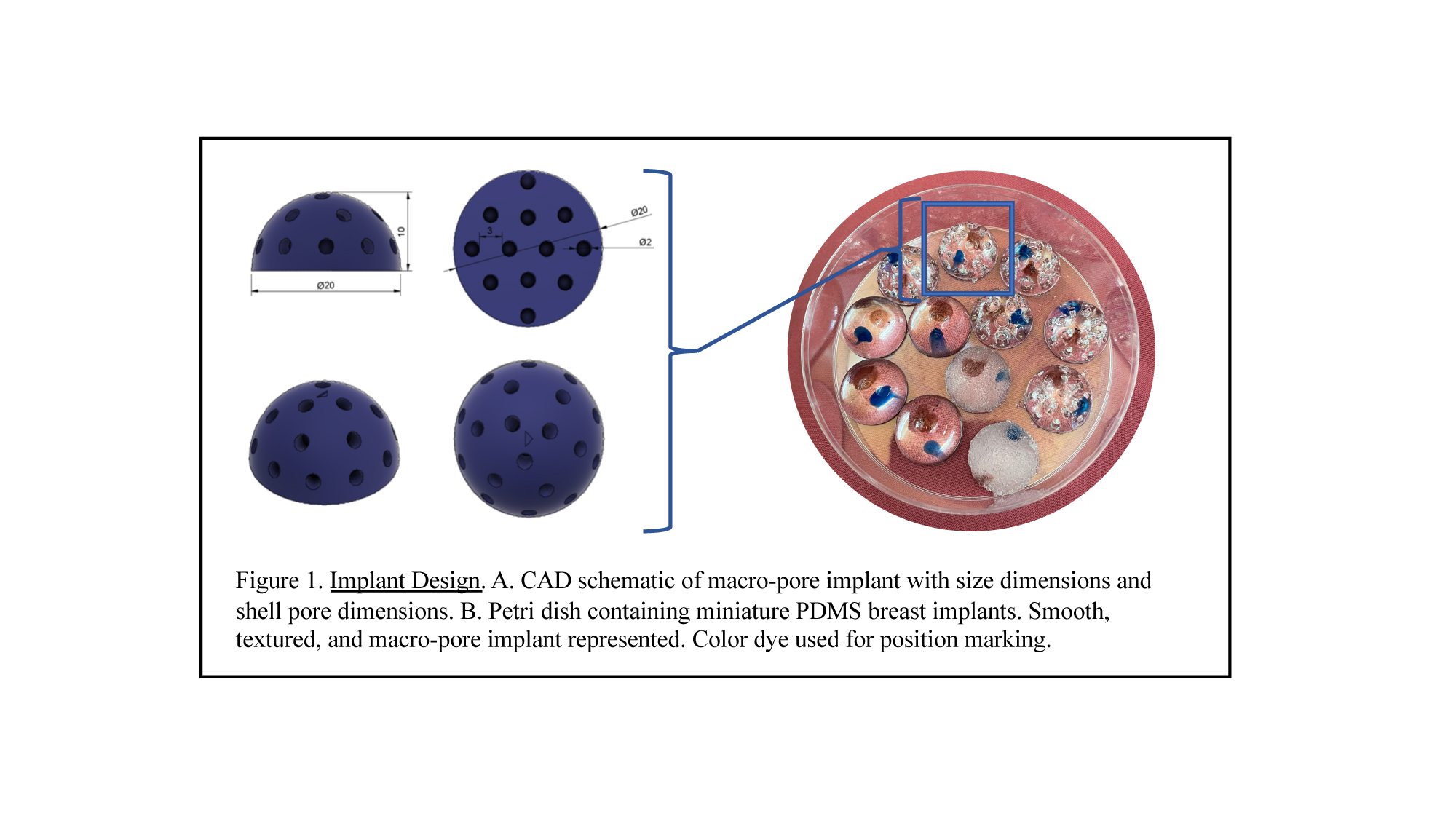Obtaining Breast Implant Rotational and Positional Stability without Texture
Luke P. Poveromo M.D.,1 Sabrina Shih B.A.,2 Nicholas Vernice A.B.,1 Carly Askinas B.S.,1 Hector Salazar Martinez B.A.,1 Xue Dong M.D.,1 Jason A. Spector, M.D.1
1 NewYork-Presbyterian Weill Cornell Medical Center, New York, NY; 2 Columbia University, Vagelos College of Physicians and Surgeons, New York, NY
BACKGROUND: The association of breast implant associated anaplastic large cell lymphoma (BIA-ALCL) with textured breast implants has garnered significant attention in both the scientific and lay press. Due to the association of BIA-ALCL with textured devices, the FDA recommended the voluntary recall of textured implants. With the recall came the loss of one of the major benefits conferred by the textured surface: positional stability for anatomically shaped implants. We propose a pilot study in which we explore a novel breast implant surface with a macro-pore (>2mm) design for the purpose of providing implant position stability.
METHODS: Miniaturized breast implants with variable surface designs were fabricated using polydimethylsiloxane (PDMS). Three-dimensionally printed negative molds were produced using CAD modeling for implant casting. The prototype implant surface was designed with implant macro-pores to the following dimensions: 2 mm diameter by 4 mm depth, 2 mm diameter by 2 mm depth, and 4 mm diameter by 2 mm depth (Figure 1). Comparison groups consisted of smooth implant surfaces and textured implant surfaces commensurate with commercially available textured surfaces. Four implants per group were autoclaved and inserted into a tight subcutaneous pocket on the dorsa of 350-400 g Sprague-Dawley rats. All rats were sacrificed at one month and the implant-capsule unit was explanted en bloc for positional and histological analysis.
RESULTS: No implants were lost to implant exposure or infection. Of the macro-pore prototype implant cohort, implants with a depth of 2 mm had the most effective rotational stability, with pore diameters of 4 mm and 2 mm demonstrating 33.83±44.91° and 34.83±27.01° rotation at one month. Smooth and textured implants rotated an average of 94.23±74.00° and 91.47±55.49°, respectively. ¾ of each of the macro-pore groups had macroscopically evident tissue ingrowth.
CONCLUSION: In this miniature implant model, the macro-pore implant with 2 mm depth macro-pores show promise in maintaining implant rotational stability without a textured surface at one month. Current work continues to characterize the capsule thickness and degree of tissue ingrowth for each macro-pore design and later timepoints are being assessed.
Back to 2022 Abstracts

